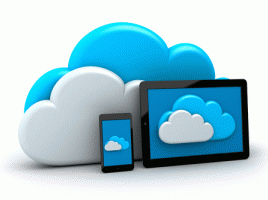The cloud has been a major topic of conversation among manufacturers over the past few years. With good reason too: it has definitively proven its financial value. Obviously, the cloud offers compelling ways for manufacturers of all sizes to reap cost savings, especially when it comes to capital spend. But cloud ERP promises even more economic win falls that aren’t quite as obvious. Just consider the following:

1. Less Capital Output
With traditional, legacy on-premise ERP, there is a large upfront capital investment in hardware, servers, and infrastructure. Cloud ERP on the other hand is managed and maintained by software and hardware experts in large, secure datacenters. Manufacturers simply pay for the service they need. Subscription-based pricing is “pay as you go,” providing the option to choose how much—or how little—functionality to buy. This involves very little upfront costs.
2. Faster Expansion
Once cloud ERP is active, manufacturers merely need an Internet connection to add new users and locations. Because there is only one instance of ERP software shared across the enterprise, they can both add and fully integrate new production locations quickly. There is no software installation—new locations are simply added to the database and connect to it via the Internet.
3. Infrastructure Cost Savings
As mentioned previously, cloud ERP offers a massive opportunity for infrastructure savings. From servers to database systems to middleware, the costs to replace, upgrade, and maintain a traditional ERP system can be a massive hit to IT budgets and resources—dollars that can even be funneled back into the budget to fuel innovation. Cloud eliminates the need to manage infrastructure, maintenance, or software versions and fixes.
4. Quicker Return on Investment
Cloud ERP is much faster to deploy than traditional, on-premise systems. With no upfront capital investment and no software to install, manufacturers can start benefitting from ERP capabilities quicker.
5. Improved Opportunity Costs
Software loses value if it’s not routinely upgraded. Unfortunately, most manufacturers don’t upgrade with every new release, falling behind by a few revisions. They could be missing out on new features until that next upgrade, which could be years down the road. Cloud ERP is versionless, adding constant value with real-time enhancements that can be used immediately. With no upgrades and no ERP software or hardware maintenance to manage, manufacturers can get out of the IT business and focus more resources on production and driving results.



